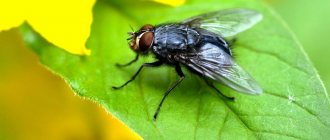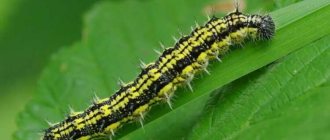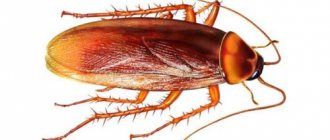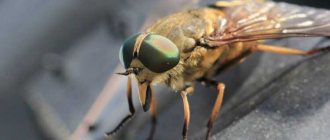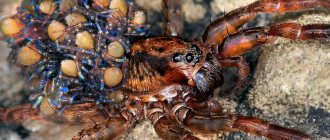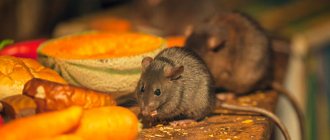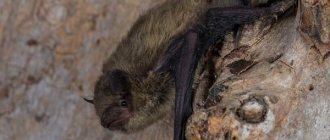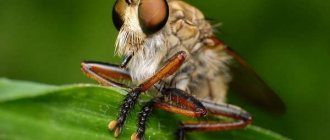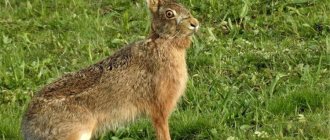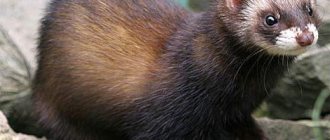Dragonflies are the oldest insect predators: the remains of their distant ancestors discovered by archaeologists date back to the Carboniferous period (350-300 million years ago). However, many years of evolution have had virtually no effect on the appearance of dragonflies, so these creatures are classified as primitive. To date, scientists have discovered and classified more than 5,000 species of these insects. But the species of dragonflies that can be observed in the European part of Russia are very few in number: there are no more than a hundred of them. These insects prefer tropical climates, so the vast majority of them inhabit the humid forests of South America and Southeast Asia. Dragonflies are not found in regions with arid climates.
Dragonflies arthropods
Superclass: Insects (Insecta) Class: Open-jawed (Ectognatha) Order: Dragonflies (Odonata)
Dragonflies are the fastest flying insects in the world. At short distances, their flight speed can exceed 100 km/h. These predatory insects are extremely voracious - in a day they eat a volume of food many times greater than their own weight. The unique huge eyes of dragonflies consist of 20-30 thousand ocelli, or facets, and provide the insects with almost complete all-round visibility.
Currently, about 5,000 species of dragonflies are known. They live mainly in the tropics and subtropics. About 170 species are known in Russia. The problem of flutter - vibration of wings in flight, which at the dawn of aviation caused the death of more than one aircraft, was solved by dragonflies millions of years ago. A slight thickening of the wing, called the pterostigma or “marginal eye,” reliably eliminates all unwanted wing vibrations.
| Brilliant beauty |
Adult dragonflies are graceful and fairly large insects with a spindle-shaped, often brightly colored body, a large rounded head and long mesh wings. They can move independently of each other and significantly increase their flight speed. The long and light abdomen serves as a rudder for the dragonfly - it helps to maintain direction. The legs of dragonflies are poorly developed and are not adapted for walking.
Dragonflies are active predators and prefer open spaces. They catch their prey - flies, mosquitoes, midges, sawflies - and eat them in flight, tearing them apart with sharp mandibles. Dragonflies are most active during the day, during the hottest hours; in good weather, flight begins after sunrise and ends at sunset. Most often they can be found along the banks of reservoirs, forest edges, along forest roads and clearings. After mating, which occurs in the air, the fertilized female lays eggs either directly into the water or into underwater or above-water parts of plants. The eggs hatch into larvae that develop mostly in shallow bodies of water.
| Structure of a dragonfly |
The larvae are completely different from adults, but also lead a predatory lifestyle, feeding on aquatic invertebrates, tadpoles and even fish fry. In larvae, the lower lip is transformed into a kind of hunting organ - a mask with hooks. Approaching the victim, the larva folds its mask forward, and the hooks dig into the victim. The larvae are unusually voracious predators - they eat aquatic invertebrates, and large larvae even attack tadpoles and fish fry. The development of a dragonfly larva lasts 1–3 years, sometimes longer. Before flying, it rises from the water along the stems of plants and is gradually freed from the skin. First, young adult dragonflies dry their delicate wings in the sun and then take to the air.
Dragonflies are a good indicator of the cleanliness of water bodies. They cannot thrive in polluted water, and therefore you will rarely see them on the banks of urban rivers. Dragonflies are grouped into two large groups: homoptera and heteroptera. Among the small-sized and graceful homoptera dragonflies, the most famous are representatives of the families Krasotki with blue or green wings, Lyutki, and Strelka. The span of large heteropterous dragonflies can reach 10–12 cm; these are species of the families Rocker, Dedki, Grandmothers, Watchers, and True dragonflies.
| In some eastern countries, larvae and adults of dragonflies are quite a common dish. Don’t be surprised if you are lucky enough to find a similar treat at one of the local markets |
Interesting fact
Despite the fact that dragonflies are formidable predators, they themselves are often prey to large animals such as frogs, lizards and birds. For the latter, such a diet is fraught with considerable danger: after all, dragonflies act as carriers of a parasitic disease - prostagonymosis. Its causative agents are flatworms, which, when ingested by a bird, make it incapable of laying and incubating eggs: the shell becomes too fragile or does not develop at all.
Reproduction
The male dragonfly has two copulatory organs. The primary one, in which the sperm is stored, and the secondary one, located on the abdominal side of the second segment, which is needed directly for mating. Before copulation, the male must transfer sperm from the primary organ to the secondary organ.
Then he grabs the female by the head using pincers at the end of the headboard. During copulation, the female curls the end of her buttock towards the male's secondary reproductive organ. If the female has already been fertilized by another male before copulation, then the male removes his sperm from the genital opening with a sharp flagellum at the end of the penis.
The female lays eggs, often in the company of the male, who holds her with pincers. She lays her eggs differently depending on the species, sometimes directly into the water, into aquatic plants, or onto trees above the water. In some species (order Lepidoptera), when laying eggs, the female, together with the male, descends under water in an air bubble (for example, an annular core).
Underwater, they can descend to depths approaching one meter and remain there for up to one hour. Dragonflies, when laying eggs above the surface of the water, are guided by its shine in the sun, so sometimes they can lay eggs on the shiny body of a car.
Reproduction of dragonflies
Examples of dragonfly species
Lute family (Lestidae)
Medium-sized slender dragonflies with slow flight.
When sitting on plants, they spread their wings to the sides and move them back, so that the wings are located at an angle to the body. Only a few species fold their wings along their abdomen. The color is usually green or bronze, with a metallic tint. The larvae colonize bodies of water with stagnant water, even those that dry up by the end of summer.
Dull lute (Sympycna fusca)
Males and females are colored the same. The body is mostly brownish-bronze, with a wide bronze stripe on the chest. The ends of the wings are slightly pointed. Body length up to 35 mm, wingspan up to 45 mm.
Adult dragonflies of the new generation fly near water bodies from late June to October. They then spend the winter and meet again in the spring.
The total lifespan of dragonflies is up to 10 months. Lutki fly poorly and therefore most often sit on coastal plants. Females lay up to 350 eggs, placing them in dead tissues of sedge, reed, reeds and other plants directly at the surface of the water, both in above-water and underwater parts, less often they lay eggs in living plant tissues.
The larvae are slender, very mobile, and develop in ponds, ditches and other standing bodies of water. They live among aquatic vegetation.
Larval development is completed in 8-10 weeks.
Lute dryad (Lestes dryas)
Males and females are colored the same.
The body is bronze-green above, the chest on the sides below is yellowish, with stripes. The edges of the wings are brown. Body length up to 40 mm, wingspan up to 50 mm.
Adult dragonflies fly near water bodies from late June to September.
Lifestyle
The black dragonfly leads a typical lifestyle for its family - it is active during the day and spends the night on plants. In the morning hours, winged insects love to bask in the rays of the sun. Males prefer to sit on open ground or rocks. They wait out stormy days with rain and wind in shelters. Like most predators, they lead a solitary lifestyle. Dragonflies spend a lot of time in the air. During flight, their wings are able to move independently of each other, this gives them freedom to maneuver.
Multi-winged dragonflies, if necessary, reach speeds of up to 60 km/h. On normal days, they make more measured flights at a speed of 15-20 km/h. Males do not show territorial aggressiveness. They wait for partners near bodies of water where mating and egg laying take place. The rest of the time the black compressed belly spends searching for prey. They have no food specialization; dragonflies feed on all types of insects they can catch. They hunt in the middle tier, choosing lying in wait tactics.
The lifespan of an imago is 2-3 months. The summer begins in mid-July and ends in October. It reaches its peak in September.
Black dragonflies are shy creatures. It is difficult to get close to them for observation. At the slightest noise they take off and fly away. This behavior is explained by the huge number of dangers that await insects. Their small body size makes them vulnerable. Compressed bellies can become prey for birds, reptiles, mammals and relatives of larger species. But with caution and patience, you can wait until the small, fragile black dragonfly lands on your palm.
Spreading
The habitat of the black dragonfly is the entire Palearctic. This species is observed in northern and central Europe, Asia, the Far East and the Caucasus, and North America. The insect lives in most of Russia, except for the southern regions. Dragonflies choose stagnant bodies of water on acidified soils. They often settle near drainage ditches, in lowlands and swamps. Representatives of the genus Sympetrum are characterized by migration.
Ecological and biological characteristics of dragonflies, species
Eggs are laid in the tissue of aquatic plants. Often up to 50-70 eggs are laid on one plant, which are placed in a straight line up to 40 cm long. In autumn, these plants die and, together with the laid eggs, fall into the water.
The larvae emerge from the eggs in the spring. The development of larvae is completed in 8 - 10 weeks.
Beauties (Calopterygidae)
The beauties are perhaps truly the most beautiful dragonflies. Males differ from females by darkened wings. These dragonflies are very rare in the Baikal region and deserve protection.
Splendid beauty (Calopteryx splendens)
Lutki (Lestidae)
The lute family (Lestidae) includes small homoptera dragonflies, but with a long pterostigma.
Near any stagnant bodies of water, the dryad lute (Lestes dryas) is very common. A similar species, the bride lute (L. sponsa), differs reliably only in the structure of the genital appendages. Females are lighter in color.
Lute dryad (Lestes dryas)
Small, poorly flying lute and arrowheads feed on mosquitoes and other small insects.
They themselves can become victims of large dragonflies, birds, or even insectivorous plants, like this lute that fell into the clutches of the English sundew.
Among the aquatic thickets, graceful nymphs of lute (Lestes) are found in large numbers. Their thin body bears three tail leaves at the end. When nymphs swim by bending their long body from side to side, the vertical tail leaves act as a fin.
They are easily broken off, or even discarded by the larva, like a lizard's tail. Without them, animals move awkwardly and slowly until the next molt, when the tail leaves are restored. Lying nymphs are very dangerous for any small living creatures - crustaceans, worms, insect larvae and for their younger brothers.
Rocker (Aeschnidae)
Our largest dragonflies belong to the rocker flies (Aeschnidae).
One of the common species in the Baikal region is the blue rocker (Aeschna juncea), with a body length of up to 70 mm and a wingspan of up to 95 mm. Males are brighter, with a predominance of blue coloring, especially on the abdomen.
In females, green and yellowish tones predominate. These are excellent flyers, capable of traveling tens and even hundreds of kilometers, settling in new bodies of water. Sometimes it is possible to observe the process of a dragonfly emerging from a larva, which for this purpose climbs out of the water onto protruding parts of plants. The wings of a young dragonfly are still fragile, cloudy, and the covers are pale colored. But within an hour after hatching, the dragonfly is ready to fly.
Rocker (Aeschnidae)
In calm weather, in the water you can distinguish a large, slender nymph of the rocker dragonfly (Aeschna), which slowly crawls among aquatic plants with its legs or sits on stones, tracking prey with the help of large compound eyes.
If disturbed, the nymph forcefully throws out a stream of water from the hindgut and quickly moves forward. In reservoirs, the rocker larva is a real thunderstorm for all inhabitants. It feeds on everything it can handle, even fish fry.
Insect lifestyle
Dragonflies are agile predators; their diet consists of small insects and invertebrates. They grab and eat prey on the fly. Adults are diurnal; they are most active on a clear sunny day. They spend the night sitting on bushes or tall grass. Summer period is from April to October. Females usually settle in forest clearings and fly to the banks of reservoirs to mate and lay eggs. Males choose coastal areas for themselves, where they live, hunt and wait for a partner for procreation.
Interesting fact. Dense vegetation is necessary for dragonflies not only for rest, but also for protection. Small insects with large wings are easily blown away by the wind.
The life of a beautiful girl dragonfly can be divided into two periods:
- Juvenile - begins after the imago emerges from the larval shell. It lasts about 10 days. The dragonfly actively feeds away from the reservoir until it acquires a characteristic color.
- Reproductive - having reached sexual maturity, insects return to water. Mating and egg laying occurs.
Dragonflies are insects with incomplete metamorphosis; their life cycle has three stages: egg, nymph, adult. Most of their life is spent in water - 2-3 years. The adult phase is much shorter - several months. Dragonflies are very shy; they fly into the air at the slightest noise or vibration in the air. Quick reaction saves insects from birds, amphibians and other enemies.
Nymph - predator in a pond
Dragonfly larvae are called nymphs; in appearance they differ significantly from adults. This is due to being in a different environment. Nymphs of beautiful girls prefer cool ponds with running water. Their body is elongated, brown in color, and their limbs are striped. Small predators eat fish eggs, mayfly larvae, mosquitoes, and small invertebrates. Nymphs are sensitive to water pollution; they survive only in clean water bodies. This is a kind of safety marker for a river or stream. In many countries of Central Europe, insects are listed in the Red Book. The lack of clean water bodies has threatened the existence of beautiful girls in Germany, Austria, and Switzerland.
Types of dragonflies: names and photos. Representatives of the order of dragonflies
Watchman - Anax imperator Leach
One of the largest species of dragonflies with powerful flight. The chest is green with wide black stripes at the seams. The wings are transparent, large (wing length 50 mm). The wing membrane is a contrasting gray-white color. Legs with long spines, with the help of which they fold into a catching “basket” for insects in flight. The abdomen of an adult male is blue; that of a female is green or bluish-green, with a solid black jagged longitudinal stripe on the dorsal side.
The eyes are large, faceted, blue-green in color.
Watchman - Anax imperator Leach
The species has an unusually wide range, crossing almost all natural zones of the Earth from the Scandinavian Peninsula to southern Africa, but in most areas within its range its distribution is local.
In Russia, the range is limited to the southern half of the European part.
Inhabits water bodies in both open and forest landscapes. The larvae develop in stagnant and low-flowing water bodies; their lifestyle is that of thicket ambush predators. The food spectrum of larvae is very wide and includes almost all small hydrobionts from cladoceran crustaceans to tadpoles and fish fry. The development cycle is 1-2 years, depending on the photoperiodic and temperature conditions of a particular habitat, as well as on the abundance and availability of food.
Emergence of adults from larvae in southern Russia at the end of May. The adult years last until mid-August. Adult dragonflies are active predators, pursuing prey in the air. They feed on a wide variety of flying insects, but the main diet is usually chironomids. There are large differences in the biotopic distribution of males and females: the former are more concentrated near water bodies, the latter are scattered over large areas, preferring forest edges, bushes, and forest belts.
During the reproductive period, males are characterized by territorial behavior - patrol flights within the individual territory, where mating and egg laying occur.
In Russia, population dynamics are steadily declining. The dispersion of adults from the breeding sites is wide; dragonflies in feeding stations can be found at a distance of 3-4 km from the nearest body of water.
Spring and summer pass - a celebration of life in central Russia. With the onset of autumn, all living things prepare for winter. Butterflies huddle in secluded places - tree hollows, under bark that has fallen off trunks, in the attics of houses.
But not all butterflies overwinter this way. There are species that can overwinter in the egg stage or in the caterpillar stage, and some in the pupa stage. Those species of butterflies that overwinter in the egg stage try to hide their eggs in places where they would be more comfortable.
Most wintering caterpillars burrow into the forest floor or, like butterflies, climb into the bark that has fallen away from tree trunks, into rotten stumps and other places.
Many butterfly caterpillars that overwinter in the pupal stage burrow into the ground and pupate there. And some pupate where their camouflage coloring is not noticeable.
Among representatives of the order Hymenoptera (wasps, bumblebees), fertilized females overwinter, huddled in the cracks of rotten stumps, under the trunks of fallen trees, which is where they can be found in winter.
The larvae of the golden bronze beetle overwinter in compost heaps.
The rotting compost releases heat, and the larvae survive safely until spring. Rhinoceros beetle larvae spend the winter in rotting sawdust.
Very often during the winter thaw you can meet representatives of the order Diptera - snow mosquitoes. These creatures appear in winter, when there are no enemies - predatory and parasitic insects.
We know that with the onset of cold weather, birds, united in flocks, fly to countries with a warm climate.
Butterflies also make such flights. For example, monarchs unite in flocks and fly for the winter from the northern states of the USA and Canada to Florida, Central America, Cuba, and the Bahamas.
There they spend the winter on certain trees, which are now under protection. In the spring, the butterflies travel again, this time to the north, where they lay eggs and die. One can only wonder how the young monarchs find their way to the winter, because their parents, who flew from the south, died.
With the biology club, we went out into the forest and looked for wintering insects. We found everything: caterpillars, small leaf beetles, longhorned beetle larvae, and bedbugs.
Sometimes small parasitic riders were found under the bark. They lay eggs on caterpillars. The larva emerges from the egg and feeds on the tissues of the caterpillar. First it eats the fat body, then the muscles and the circulatory system. The parasite, having completed its development, emerges from the skin remaining from the caterpillar and pupates on it, either on the surface of the earth or burrowing into the soil.
Fly
Representatives of the order Diptera - flies - also hibernate; they can often be seen between window frames.
Two-spot ladybugs also overwinter. In our museum of A.S. Pushkin in the western Moscow region there are a lot of these bugs every year. During the thaw, the bugs wake up and how joyful it is to see them - the harbingers of spring.
But it’s not easy for insects waking up in the winter thaw. They spend energy, but they have nothing to eat. So the prolonged winter thaw does not bode well for wintering insects.
Swimming beetle
Many insects and their larvae overwinter in water. For example, large beetles are fringed swimming beetles.
As a child, skating on the first, still thin ice, I often saw these beetles swimming under the ice.
What does a dragonfly eat?
Photo: Dragonfly in nature
Dragonflies are predatory insects. Adults feed on almost all types of insects inhabiting the air.
The diet of dragonflies includes:
- mosquitoes;
- flies and midges;
- mole;
- beetles;
- spiders;
- small fish;
- other dragonflies.
Dragonfly larvae feed on mosquito and fly larvae, small crustaceans, and fish fry.
Based on their hunting methods, these insects are divided into several subspecies:
- free hunters who hunt in the upper tier. This group includes species of dragonflies with powerful and developed wings that can fly well and quickly. These species may use school hunting, but more often hunt alone at heights from 2 to 9 meters above the ground;
- free-flying predators hunting in the middle tier. These dragonflies hunt at heights of up to 2 meters. They are always in search of food; to rest, they can sit on the grass for a few minutes, and then begin to hunt again;
- dragonflies lying in wait. This species is distinguished by its unusual way of hunting. They sit quietly on the leaves or stems of plants, looking out for prey, from time to time breaking off to attack;
- dragonflies living in the lower tier. These dragonflies hunt in thickets of grass. They flutter slowly from one plant to another in search of insects that are sitting on the plant. This species eats prey while sitting on a plant, and does not eat while flying.
Interesting fact: Cannibalism is very common among all species of dragonflies. Adult dragonflies can eat smaller dragonflies and larvae. Sometimes females after mating can attack the male and eat him.
Insects of the true dragonfly family
I was surprised then how they breathed. Now I know that swimming beetles breathe in winter by collecting bubbles of oxygen released by aquatic plants. There is another way to obtain oxygen from water. Between the elytra and the abdomen of the swimming beetle there is a cavity, and this is where the beetle collects oxygen bubbles. But a beetle can breathe with the help of a bubble only at low temperatures, when all its processes are slowed down and a large amount of oxygen is not required.
Dragonfly larva
Dragonflies and representatives of the order Diptera, mosquitoes, overwinter in the larval stage.
Dragonfly larvae have gills and breathe oxygen dissolved in water. The “bloodworms” known to fishermen—red worms—are the larvae of mosquitoes of the bell ringer family.
Bells live in bottom mud. “Bloodworms” can be small or large—these are mosquito larvae of different species.
Another example of wintering of dipterans is observed in the raspberry stem gall midge. This creature overwinters in the larval stage.
If you look closely at young raspberry shoots in winter, you can see swelling and growth of stem tissue. And by opening this incorrectly grown part of the stem, the so-called gall, you can see the orange larvae of the raspberry gall midge.
All hibernating insects have one goal during the wintering period - to survive in conditions of low temperatures.
Before wintering, insects undergo various processes of body restructuring. One of the important processes is the accumulation of glycerol.
All processes occurring during wintering require the presence of this substance.
In winter, the living tribe of insects disappears from our field of vision. Under the cover of snow, they are waiting for the hour of festive rebirth - the long-awaited spring.
A. L. Kalutsky, entomologist
Types of dragonflies: names and photos. Representatives of the order of dragonflies
Dragonflies are the oldest insect predators: the remains of their distant ancestors discovered by archaeologists date back to the Carboniferous period (350-300 million years ago).
years ago). However, many years of evolution have had virtually no effect on the appearance of dragonflies, so these creatures are classified as primitive.
To date, scientists have discovered and classified more than 5,000 species of these insects. But the species of dragonflies that can be observed in the European part of Russia are very few in number: there are no more than a hundred of them.
These insects prefer tropical climates, so the vast majority of them inhabit the humid forests of South America and Southeast Asia. Dragonflies are not found in regions with arid climates.
Dragonfly (Orthetrum anceps Schn.)
The length of the abdomen is 23-26 mm, the length of the wing is 26-28 mm. This Mediterranean species lives in Russia only in the Ciscaucasia. Like all other dragonflies of this genus, it is territorial during breeding. The larvae are difficult to distinguish from Libellula larvae; just like the latter, they burrow into the soil of the bottom of the reservoir. They live in standing and flowing water.
The largest genus in the number of species among true dragonflies in the European part of Russia. It includes 10 species of our smallest heteroptera dragonflies. Many adult dragonflies of this genus have noticeable species-specific characteristics in color, which makes them easy to identify in nature even at a distance. The genus is characterized by sexual dimorphism in coloration: females, as a rule, are more difficult to distinguish from a species at a distance than males. The variety of temperature requirements of Sympetrum dragonflies allowed them to colonize all areas of European Russia; Only the composition of species changes somewhat with changes in geographic latitude. All species of these dragonflies are numerous in their habitats. Representatives of Sympetrum, like the four-spotted dragonfly, often experience mass migrations. A characteristic phenomenon for dragonflies of all species of this genus is the laying of eggs during contact protection of the female by the male. In this case, the dragonflies are connected in tandem - with the appendages of the end of the abdomen, the male holds the female by the prothorax. Both dragonflies fly together for a long time - the male in front, the female behind - and, making shaking movements, drop eggs released at the end of the female's abdomen onto the ground or into the water. Dragonfly larvae of this genus develop in a wide variety of standing and flowing bodies of water. Unlike Libellula larvae, they move a lot along the bottom and have relatively long legs. Very active predators.
Born predator
Without exception, all types of dragonflies (both nymphs and adults) feed on insects, often blood-sucking (horseflies, mosquitoes, midges). The dragonfly's body shape is ideal for hunting on the fly. These insects are “lean”, with a pronounced chest and elongated abdomen.
The head of a dragonfly is very mobile. There are two complex compound eyes on it, allowing the insect to see everything that happens around and behind, and between these two there are ordinary ones, which serve for orientation in space.
The organs of vision are designed in such a way that a dragonfly sees best against the sky. Therefore, she attacks the victim from below. The insect has a powerful mouth (“gnawing,” as scientists say), short antennae and stiff legs covered with hairs that help capture prey. Each representative of the order has two pairs of wings, which are equally well developed.
This means that it is a bimotor insect. Dragonflies can fly at speeds of over 55 km/h.
Homoptera
There are three suborders of dragonflies. The first of them is Homoptera. It includes graceful, light and, as a rule, small insects with a very elongated abdomen. Both pairs of wings are identical in size and shape; when at rest, the dragonfly folds them at the back so that they form an acute angle with the surface of the back. Homoptera fly slowly and smoothly.
Among them are such species of dragonflies as the graceful arrow, the beauty-girl and the dim lute. Homoptera nymphs living in water have a special respiratory organ located at the end of the abdomen - caudal gills.
Variopterans and Anisozygoptera
The second suborder is heteroptera. They have a powerful body, and the base of the hind wings is widened.
The eyes often touch. The flight speed of heteroptera is high. At rest, the wings of these dragonflies are spread apart. The larvae of dragonflies live in mud and breathe using rectal gills. It is worth mentioning some species of dragonflies belonging to heteroptera. This is an ordinary grandfather, a large rocker, a bronze headstock, and a blood dragonfly.
Representatives of the third suborder (Anisozygoptera) combine the characteristics of the first two, although in appearance they are closer to heteroptera.
Dragonflies (Odonata)
These dragonflies do not live in Russia.
Where does the dragonfly live?
The habitat of the chirping insect is as vast as the variety of coloring options. But you can find spotted individuals, yellow, green, blue, pearl blue. There are also interesting darkenings on the abdomen against the background of the main color.
Dragonflies prefer maximum proximity to water bodies, an abundance of food, and a fairly warm tropical climate. This expands their possible habitat to almost all continents of the globe. They are common in:
- Russia,
- Italy,
- America,
- India,
- Iran,
- Turkey,
- China,
- Africa,
- Australia.
They do not survive in dry, low-water areas.
Beauties
In general, the order of dragonflies stands out among other orders of insects for its aesthetic merits. And it’s basically impossible not to admire the representatives of the family of beauties. For example, beautiful girls are small (up to 5 cm long), thin even-winged dragonflies with a wingspan of no more than 7 cm. The body and wings of males are colored in blue, green, purple shades and have a metallic sheen.
In females, the body is colored, but the wings are not.
Beauties prefer the overgrown banks of quiet rivers and small streams. They lay eggs in the leaves of coastal plants; The larvae also try to stay close to the stems and roots. The flight of a beautiful girl resembles the flight of a butterfly.
Rocker arms
These are large, bright and expressively colored dragonflies. Representatives of the order of dragonflies rarely have such endurance: rockers can fly many kilometers from their native body of water (it happened that they were seen over the ocean). The size of these insects also inspires respect: the wingspan of the watchman-overlord (or emperor) reaches 8 cm.
The patrolmen's chest is greenish, their abdomen is blue, with a yellow ring. The wings of males are completely colorless, while those of females are barely yellowish. The organs of vision are bluish-green. Watchmen live near stagnant, often drying up bodies of water. They lay their eggs in rotting plant tissues immersed in water. Their large larvae are able to cope even with fish fry.
In addition to those mentioned above, in the European part of Russia there are representatives of such families as: grandmothers, lyutki, cordulegasteridae. All dragonflies are considered beneficial. They eat blood-sucking insects and pests and, in turn, are food for birds and fish.
Arrows
Arrows are not as spectacular as beauties, but just as graceful dragonflies. The photo of the graceful arrow, posted below, confirms this fact.
Shooters lead the same lifestyle as beauties, except that they choose more modest prey.
And it is not surprising, because the body length of the graceful arrow is only 3.5 cm, while the wingspan is 4.5 cm. The male has an elongated blue chest with a longitudinal black stripe and a black abdomen, as if intercepted by thin blue rings. The wings are narrow and transparent. Some females have a similar coloration, others are rather inexpressively colored and have neither stripes nor rings.
Arrows fly slowly and rarely leave their homes. Their larvae live and hunt in the stems and roots of aquatic plants. Distinguishing one species from another within this family is not an easy task. But it is impossible to confuse them with another family of arrows.
Real dragonflies
This family of the heteroptera suborder includes numerous species of dragonflies. Their names speak for themselves: swamp, flat, blood.
These insects are distinguished by a massive, wide and relatively short body, wings slightly shifted towards the head and the presence of dark spots at their base. The female true dragonfly lays eggs directly into the water of a pond or quiet river, and sometimes into coastal sand. Large nymphs of true dragonflies live in the mud. The flat dragonfly is a medium-sized insect.
The wingspan is 8 cm, the body length is 4.5 cm. Both females and males have a brownish-yellowish chest, but the male's abdomen is covered with bright blue pollen, while the female's abdomen is brown, with dark stripes on the sides. At the base of both pairs of wings there are dark triangles. The eyes are greenish.
Other representatives of the family are very noteworthy - blood dragonflies (photo below).
They are easily recognized by their bright body color - reddish-yellow, orange or brown-red.
These dragonflies are one of the latest. They are active from mid-summer until November. The transformation of blood dragonfly larvae into adults occurs in just a couple of months.
Description: What does a dragonfly look like?
Adults
- Slender, elongated body 20-130 mm long
- Head
- Breast
- 2 pairs of wings
- Three pairs of legs
The female and male often have different body and wing colors (sexual dichroism). The weight of an adult individual can vary depending on the species, for example, a very small individual weighs about 20 mg, and the “emperor watchman” species weighs about 1200 mg.
The insect's head is large, with huge eyes on the sides. It is very mobile and can rotate 180 degrees and tilt back 70 degrees. Compound eyes may consist of 28,000 “facets” (ommatidia).
In addition to compound eyes, the dragonfly also has three simple eyes that form a triangle. This structure allows the dragonfly to see not only forward, but also to the sides and even behind itself.
- The upper part of the compound eye of the dragonfly sees at a distance, and the lower part perceives closer objects. The visual range of compound eyes is approximately 8 meters.
- The thorax is characteristic of all insects and consists of a prothorax with two limbs, as well as a mesothorax and metathorax with four legs.
- Males have forceps on their abdomen, which they use to hold the female during mating.
- These insects are voracious predators and are therefore armed with sharp teeth.
Wings of a dragonfly
The maximum wingspan of an adult dragonfly can reach 18-20 cm. The wings consist of chitin with a complex structure that allows the insect to easily maneuver during flight. The maximum speed of a dragonfly is comparable to the speed of modern drones: 55-57 km/h.
Grandfathers
Among the features of these dragonflies are the variegated coloration, widely spaced eyes and the presence of a notch at the base of the hind wings in males.
Grandfathers are capable of long flights and prefer flowing reservoirs with clean water, where females lay eggs directly in flight.
Common dedka, tailed dedka and horned dedka are the most common species of dragonflies in Central Russia. These names sound funny (as well as “metal grandmother” or “bronze grandmother”), but you need to keep in mind that grandfathers are also called rivermen, and grandmothers – patrolmen.
The Common Dedka is a black and yellow dragonfly with transparent wings. The coloring is vaguely reminiscent of wasp.
Dedok larvae are voracious, strong and can burrow into soft mud. And adult grandfathers, oddly enough, are short-lived. They live no longer than a month.
